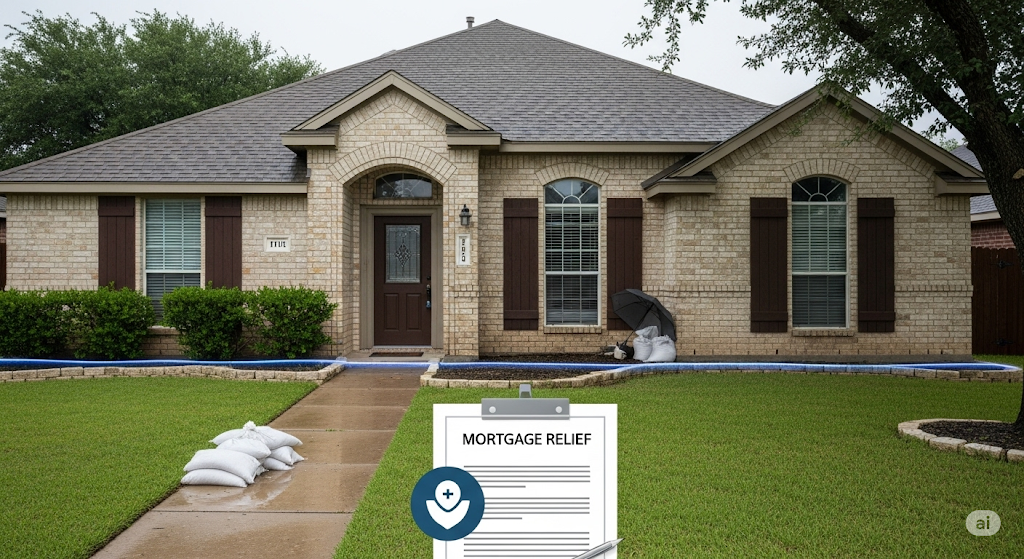Federal Mortgage Assistance for Flood-Impacted Homeowners
When floodwaters recede, homeowners face urgent questions about insurance claims and mortgage obligations. LBC Capital offers guidance and support during recovery. Our expertise helps you navigate insurance gaps and access mortgage relief so you can rebuild with confidence.
FEMA Disaster Declaration and Individual Assistance
FEMA has issued a Major Disaster Declaration, retroactive to July 2, 2025, covering key Central Texas counties including Burnet, Kerr, Travis, Williamson, San Saba, Tom Green, and others. In those counties, residents can apply for federal assistance such as grants for temporary housing, home repairs, and other disaster-related needs. FEMA assistance is capped at $87,200 per household and supports U.S. citizens or qualified non-citizens whose damages exceed what their insurance covers.
HUD and FHA Foreclosure Protections
The Department of Housing and Urban Development (HUD) and Federal Housing Administration (FHA) have activated a 90-day foreclosure moratorium for FHA-backed loans in designated disaster zones. This includes Home Equity Conversion Mortgages, commonly known as reverse mortgages, protecting homeowners aged 62 and older from immediate repayment pressures following flood damage.
Mortgage Forgiveness and State-Level Relief Programs
While the Texas Emergency Mortgage Assistance Program (TEMAP) was originally created to help with COVID-related hardship, it may serve as a model for future disaster-related mortgage assistance. Local administrators may deliver Community Development Block Grant Disaster Recovery (CDBG-DR) funds to eligible homeowners, helping them stay current on payments or catch up on missed obligations. LBC Capital closely monitors these evolving programs and helps clients apply for any mortgage relief available.
Navigating Insurance Claims After Flooding
Low Flood Insurance Coverage Rates in Central Texas
Most standard homeowners insurance does not include flood coverage. Only around 7 percent of Texas homeowners carry National Flood Insurance Program (NFIP) policies. In many inland counties like Travis and Kerr, coverage drops to just 2 percent. Without flood insurance, replacement and repair costs often fall on homeowners unless FEMA grants provide supplemental assistance.
Filing an NFIP Flood Insurance Claim
If you have an NFIP-backed flood policy, file your claim within 60 days of the flood event. Lost-use coverage may reimburse for temporary housing and living expenses. It is important to file your insurance claim before applying for FEMA assistance and to document all damage thoroughly with photos, property records, and adjuster reports.
State and Local Support for Flood Recovery
Disaster Designation and Property Tax Relief
Texas declared a state disaster across 15 additional counties. In these counties, homeowners may qualify for property tax exemptions if their home damage exceeds 15 percent. Flood survivors should complete assessments using iSTAT, the state’s Individual State Assessment Tool. This tool ensures access to state recovery funds and verifies compliance with floodplain building codes.
Community Recovery Resources
Local nonprofit and real estate groups have launched initiatives to support displaced residents. For example, the Realtors Relief Foundation has committed $500,000 in housing grants to Central Texas flood survivors. These grants help cover gaps in housing expenses when insurance is inadequate or delayed. Community organizations, including Operation Blessing and other local charities, also contribute with volunteer cleanup and recovery services.
The Importance of Flood Insurance Going Forward
Common Misconceptions and Policy Drop-offs
Despite being in flood-risk zones, many Texans opt out of flood insurance due to cost concerns or misunderstanding their risk. Some cancel policies when recent disasters fade from memory—a behavior often described as “catastrophe amnesia.” Experts caution that rebuilding without insurance or updated elevation standards leaves homeowners vulnerable.
Impacts on Reverse Mortgages
Homeowners with reverse mortgages are especially at risk. If flood damage occurs and the property is uninsured or repairs are not made, the loan may become due in full. This could result in foreclosure, even for seniors who intended to remain in their homes.
How LBC Capital Supports Homeowners Post-Flood
Personalized Mortgage Relief Guidance
LBC Capital offers step-by-step support to help homeowners recover. We explain FEMA grant eligibility, help file timely applications, and guide homeowners through HUD foreclosure protections. We also coordinate with insurance adjusters and support documentation needed for FEMA or insurance claims.
Navigating Tax Relief and Rebuilding Permits
Our team helps homeowners apply for local tax exemptions, submit accurate damage assessments, and understand floodplain requirements. In many counties, homes with less than 50 percent structural loss can be rebuilt without elevation changes, but this may leave them vulnerable to future flooding. LBC Capital helps clients make informed decisions about rebuilding.
Rebuilding Responsibly After a Flood
Understanding Compliance Requirements
Rebuilding in flood-prone zones demands caution. Local jurisdictions require compliance with updated floodplain standards, especially for homes with significant damage. LBC Capital works with homeowners to ensure their reconstruction efforts meet these regulations and preserve long-term home value.
Coordination With Contractors and Adjusters
We help homeowners understand repair timelines, insurance estimates, and contractor bids. Our mortgage experts ensure that financing aligns with insurance payouts and any available grants. This coordination simplifies the rebuilding process and keeps projects on track.
A Suggested Recovery Timeline
- Contact your flood insurance provider immediately and begin the claims process.
- Apply to FEMA through DisasterAssistance.gov or by calling the disaster hotline at 1-800-621-3362.
- Visit local Disaster Recovery Centers for in-person support and documentation assistance.
- Submit an iSTAT damage assessment to qualify for state and local aid.
- Use FEMA funds, HUD protections, and nonprofit resources to maintain mortgage status and avoid foreclosure.
- Review elevation and flood zone regulations before beginning reconstruction.
Contact Us Today
Central Texas homeowners affected by the July 2025 floods have access to FEMA grants, HUD foreclosure protections, state tax relief, and local housing assistance. Yet only a small portion of residents carry flood insurance, leaving many to navigate financial recovery with limited resources. LBC Capital ensures you don’t face recovery alone. We provide expert support, mortgage guidance, insurance coordination, and help you rebuild smarter and stronger. Trust LBC Capital to protect your financial future after disaster strikes.
